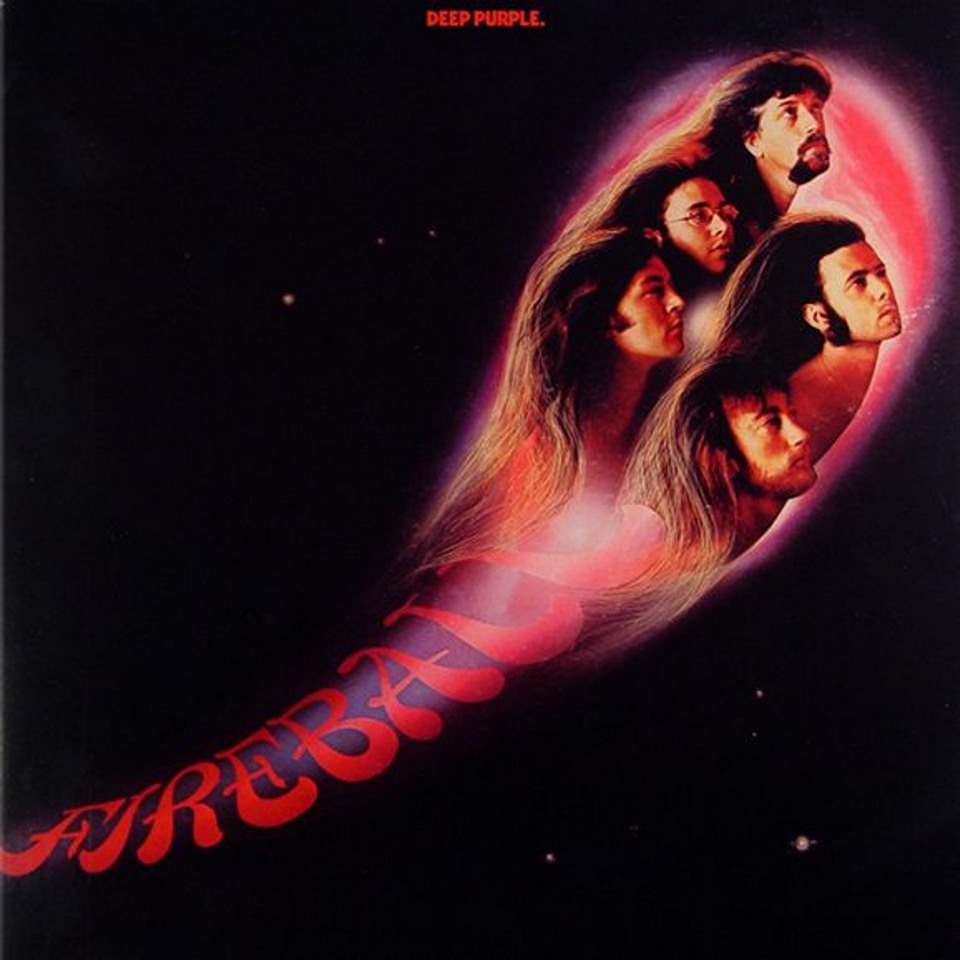
Deep Purple: Fireball (Harvest)
An album that ended up in a squeeze between “Deep Purple In Rock” and “Machine Head”. There were no epic celestial journeys like “Child In Time” on it, neither did any of the tracks deliver monster riffs the like one that turned “Smoke On The Water” into a rock band’s wet dream. Then came the fabulous live album “Made In Japan” and the reputation of “Fireball” faded even more, viewed at best as a work of transition.
Very unfair: It is a much more even album than its predecessor. The band plays tighter, the pieces have fallen into place, and thus they also deliver a more self-assured and bold attack. The interplay between Blackmore and Lord is sometimes exceptionally funky, and behind them the rhythm section pushes on like a diesel locomotive. It’s heavy, it’s powerful, it’s cool, it’s groovy. The band is in complete control.
They hardly yield an inch from the formula, good as it is, except for a tiny pinch of backwards guitars, the frantic pace of the title track and of course the album’s absurdly atypical “Anyone’s Daughter” – a talking blues satire with a cowboy hat, served in a stripped down arrangement of honky tonk-piano, plucking country guitar, tambourine and a remote, dreamlike electric slide. Ian Gillan shows his versatility as he turns into a storyteller, relaxed, almost cheerful, a twinkle in his eye.
But on the rest of the album he is a brutal ox pulling the heavy monster through your speakers, sometimes breaking out in his ear piercing signature howl.
It is a blessing to hear Deep Purple from this period. They were a unique organism, every individual contributed to the whole, and that whole was the mark II lineup, the classic Purple, and no other band on the planet sounded like them.
Blackmore was the flashy eye-and ear-grabbing guitar hero or even semi-god, battling it out with Jon Lord’s huge, dirty waves of Hammond. Blackmore’s guitar and Lord’s organ and the way the two musicians interacted was the trademark of the band, as was Gillan’s use of his vocal cords. But none of them would have achieved this without the band’s stellar rhythm section. Roger Glover’s fluid and tight bass playing was both melodic and funky. Bespectacled Ian Paice, looking so fragile behind his drums, was a powerhouse of a man, one of the best rock drummers ever.
The band never seemed to like “Fireball” much (except maybe Gillan). Blackmore claimed they were under pressure and never had time for quality control. That may be so, but it sure doesn’t sound like it. “Fireball” is a strong piece of work, it captures this incarnation of the band just as they struck gold. They had just entered their classic period. They are inspired. They are in shape. They deliver.
The fabulous “Strange Kind Of Woman”, recorded at the same sessions, was omitted from the album. It was only released as a single in Europe. At the time they must have thought that “Fireball” was strong enough as it was. And they were right.
Original European release July 1971:
(All songs written by Ritchie Blackmore, Ian Gillan, Roger Glover, Jon Lord and Ian Paice)
Side One
1. “Fireball” 3:25
2. “No No No” 6:54
3. “Demon’s Eye” 5:19
4. “Anyone’s Daughter” 4:43
Side Two
5. “The Mule” 5:23
6. “Fools” 8:21
7. “No One Came” 6:28
Lineup:
Ritchie Blackmore – guitar
Ian Gillan – vocals
Roger Glover – bass
Jon Lord – keyboards, Hammond organ
Ian Paice – drums
First Published in Pattaya Mail on May 23, 2013
 |
 |
 |





